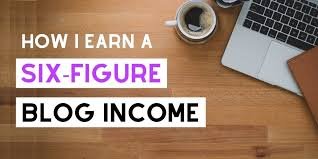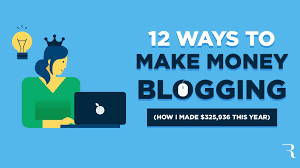Starting a blog can seem like a daunting task, but it doesn’t have to be. Whether you’re looking to share your personal stories, promote a business, or establish yourself as an expert in your niche, blogging is an excellent way to connect with people and express your creativity. In this ultimate guide, we’ll walk you through the process of starting your first blog, from choosing the right platform to hitting “publish” on your first post. Let’s get started!
Step 1: Choose Your Blog’s Niche
The first step in starting a blog is deciding what you want to write about. While it might be tempting to start a blog about everything that interests you, it’s best to focus on a specific niche. This makes it easier to attract a targeted audience and build authority within that niche.
Here are some popular blog niches you can consider:
- Lifestyle: Share your daily life, experiences, and tips on everything from travel to fashion.
- Health & Fitness: Offer advice on nutrition, exercise routines, and wellness practices.
- Personal Finance: Share tips on budgeting, saving, investing, and making money.
- Food & Recipes: Showcase your culinary creations and share your favorite recipes.
- Tech & Gadgets: Discuss the latest tech trends, reviews, and innovations.
- Parenting: Offer advice, tips, and stories for parents navigating their journey.
Consider what you are passionate about and where your expertise lies. A niche that excites you will make the blogging process more enjoyable, and your passion will be evident to your readers.
Step 2: Select a Blogging Platform
Once you’ve decided on your niche, the next step is selecting a blogging platform. There are a variety of platforms to choose from, each with its own set of pros and cons. Here are a few of the most popular options:
- WordPress.org (Self-hosted): The most flexible and customizable blogging platform. It requires you to purchase hosting and a domain name but offers full control over your blog’s design and features.
- WordPress.com: A hosted version of WordPress that takes care of the technical aspects for you. It’s easier for beginners but offers less customization.
- Blogger: A free platform by Google that’s simple to use but has fewer features and design options compared to WordPress.
- Wix: A drag-and-drop website builder that offers easy-to-use templates and features for blogging.
For most people, WordPress.org is the best option, especially if you want to grow your blog and have full control over it. If you’re just getting started, Wix or WordPress.com may be more beginner-friendly.

Step 3: Pick a Domain Name and Hosting Provider
Your domain name is your blog’s address on the internet (e.g., www.yourblogname.com), so it’s important to choose one that is catchy, easy to remember, and relevant to your niche.
Here are a few tips for choosing the perfect domain name:
- Keep it short and simple: Avoid long and complicated names.
- Use keywords: Try to incorporate your niche’s main topic into the domain name for better SEO.
- Make it memorable: Your domain name should be easy to remember and spell.
Once you’ve decided on a domain name, you’ll need to choose a hosting provider. Web hosting is where your blog’s files are stored and served to your visitors. Some reliable hosting providers include:
- Bluehost: Officially recommended by WordPress and offers affordable plans with excellent customer support.
- SiteGround: Known for its excellent performance and security features.
- HostGator: A budget-friendly option with reliable uptime and a range of hosting plans.
Most hosting providers offer domain registration as part of their services, so you can often purchase both hosting and a domain name in one place.
Step 4: Set Up Your Blog
After you’ve selected your platform, domain name, and hosting, it’s time to set up your blog. If you’ve chosen WordPress.org, here’s how you can get started:
- Install WordPress: Most hosting providers offer one-click WordPress installation.
- Choose a Theme: WordPress has thousands of free and premium themes to choose from. Choose one that fits your niche and blog style.
- Customize Your Blog: Once you’ve selected a theme, customize your blog’s appearance. Add your logo, adjust colors, and set up your navigation menu.
- Install Plugins: Plugins are tools that add extra functionality to your blog. Some essential plugins include:
- Yoast SEO: For optimizing your blog posts for search engines.
- Akismet: To prevent spam comments.
- Jetpack: For enhanced security and performance.
- Write Your First Post: Now, it’s time to start creating content. Write a compelling introduction post that explains who you are and what your blog is about.

Step 5: Create Quality Content
Content is the backbone of any blog, and it’s what will attract and engage your audience. When writing blog posts, always focus on quality over quantity. Here are some tips to help you write compelling content:
- Write for your audience: Think about the questions your audience is asking and provide value in your content.
- Use catchy headlines: A great headline can make all the difference in whether someone clicks on your post. Make it interesting, clear, and relevant.
- Be consistent: Set a realistic posting schedule and stick to it. Consistency helps you build trust with your audience.
- Focus on SEO: Use relevant keywords throughout your posts, optimize your images, and write meta descriptions to help your blog rank on search engines.
Step 6: Promote Your Blog
Once your blog is live and you’ve published a few posts, it’s time to start promoting your content. Here are some ways to drive traffic to your blog:
- Social Media: Share your blog posts on platforms like Facebook, Instagram, Twitter, and Pinterest.
- Guest Blogging: Write guest posts for other blogs in your niche to increase your exposure.
- Email Marketing: Build an email list and send newsletters to your subscribers with updates on new blog posts.
Step 7: Monetize Your Blog
As your blog grows, you can start thinking about monetization. Here are some popular ways to make money from your blog:
- Affiliate Marketing: Promote products and earn a commission for each sale made through your referral link.
- Sponsored Posts: Partner with brands to write sponsored content on your blog.
- Ad Revenue: Display ads on your blog using services like Google AdSense.

Starting a blog is an exciting journey that requires dedication, but with the right steps, you’ll be well on your way to success. By following this guide and consistently producing high-quality content, you’ll be able to build a blog that resonates with your audience and achieves your goals.
Related Tags:
- How to start a blog
- Blogging for beginners
- Blog setup guide
- Create a blog from scratch
- Best blogging platforms
- Choosing a blog niche
- Blog content strategy
- SEO for beginners
- Monetize your blog
- First blog post tips













